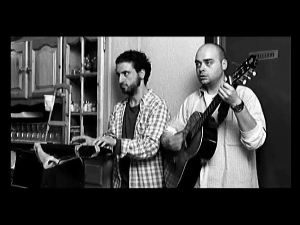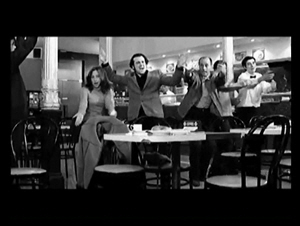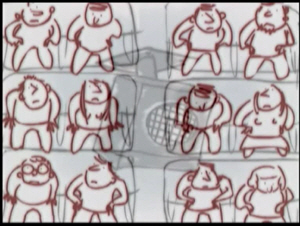Sound
Sound
Sound has a very strong influence on our experience of the action in a film. It establishes realism and location, aids continuity, and carries a great deal of a film's emotive content and narrative information relating to mood, genre and structure.
There are three areas of sound to be aware of:
- Dialogue and recorded sound: diegetic sound which accompanies the action on screen.
- Sound effects: both on and offscreen and tend to be diegetic, even though they may be artificially created in a Foley studio or exaggerated in post-production.
- Music: can be diegetic (e.g. from a car radio) but is more often non-diegetic.
Diegetic sound is sound motivated by the action in film (i.e. sound the characters can hear).
Non-diegetic sound is sound not directly connected to the action on screen (i.e. sound the characters cannot hear, typically music which is added on).
Dialogue and recorded sound
Though recording sound may seem straightforward, it is seldom simple. Our ears and brains are very good at removing sound distractions like road works or seagulls, so simply recording sound at a location would never render it the way it is actually heard and perceived – or the way a filmmaker requires it to be heard on the soundtrack.
When making a film you usually need to place the microphone close to the speaker to collect clean dialogue and lessen unwanted sound in the background - but the end result of this might not be realistic! In fact, mixing the sound can be one of the more complex and finicky areas of film post production, as the sound designer works to create a credible but emotive soundscape that will move the narrative forward. And if you think it must be difficult for live-action sound designers, spare a thought for the work of the sound designer working on an animation!
(It's worth noting that a weak soundtrack is very common in films by beginners, usually because the importance of sound is underestimated, film being misconceived as a predominantly visual medium.)
To control the relative loudness of all the sounds (dialogue, sound effects, background sound, room tone, music), these are laid out on a variety of tracks in the computer which can be independently adjusted and then mixed to create the final soundtrack.
Sound Effects
Sound effects (FX) can be used to aid narrative economy, punctuate and reinforce action (spot FX), guide audience attention, motivate reactions or cuts, build pace, bridge scenes, establish location (atmos FX), establish genre, and enhance mood. They can be:
- Diegetic and realistic: part of the action and realistic, even if they are not actually recorded at the same time as the film (e.g. the sound of a book being dropped or horses coming up a road).
- Diegetic and realistic but exaggerated: a technique frequently used for spot FX in children's films to help them understand the action (e.g. the tinkle of a bell).
- Diegetic and non-realistic: fulfills our expectations of sound even when no sound would actually be there (e.g. the sound of a ghost, horses hooves on sand or the sound of a spaceship travelling through empty space).
- Non-diegetic: the aural equivalent of speed marks in a comic book used to indicate movement, e.g. travelling back in time, or an inner response from one of the characters to the action, like a hair-raising moment in a ghost story.
Music
Music's basic functions are similar to the use of sound effects: establishing mood, providing character motifs, establishing themes, heightening suspense, reinforcing action, changing pace and providing linkages.
Music's primary function is to serve the screen narrative - it is not really intended to be listened to in its own right (indeed it may often be close to inaudible in the sound mix). And, despite its often powerful role in the narrative, film music usually avoids drawing attention to itself (unless as a deliberately-intended counterpoint, where the music might well be at odds with what is seen for a particular dramatic or comic effect). The obvious exception to this is musicals and music videos, where the music comes first and a 'naturalistic' narrative often takes a back seat to the music.
Not all films use music the same way.
- Hollywood films often use traditionally orchestrated music throughout the narrative to guide the audience's emotional response to characters and action, support narrative continuity, and to punctuate the key moments in a film.
- Romantic films tend to use highly emotional music filled with melody, harmony and rhythm.
- Horror and thriller films often use more discordant or chromatic music that does not employ traditional, out-and-back musical phrasing, but can instead be turned quickly to reflect the dramatic tension within the scene.
- Documentary filmmakers often take the easy choice of using existing 'found' music to build a soundtrack.
- Art house and independent filmmakers can regard film music as overly manipulative and may choose to avoid using non-diegetic music that is not motivated within the action of the film, with the exception of titles or credits, or music used for the purposes of subversive counterpoint.
How and where music is used, the type of music, and the choice of instrumentation are key artistic choices which have a major impact on the way audiences respond to the film.


